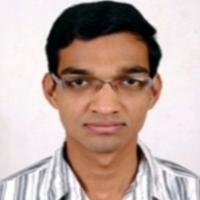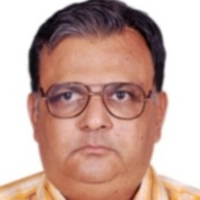International Journal of Computer Network and Information Security (IJCNIS)
IJCNIS Vol. 6, No. 3, 8 Feb. 2014
Cover page and Table of Contents: PDF (size: 696KB)
Artificial Neural Network trained by Genetic Algorithm for Smart MIMO Channel Estimation for Downlink LTE-Advance System
Full Text (PDF, 696KB), PP.10-19
Views: 0 Downloads: 0
Author(s)
Index Terms
LTE-A, MIMO, Artificial Neural Network (ANN), Back-Propagation, Layered Recurrent Neural Network (LRN), Feed-forward neural network (FFNN), Cascade-forward neural network (CFNN), Genetic Algorithm (GA)
Abstract
Long-Term Evolution (LTE) is the next generation of current mobile telecommunication networks. LTE has a flat radio-network architecture and significant increase in spectrum efficiency, throughput and user capacity. In this paper, performance analysis of robust channel estimators for Downlink Long Term Evolution-Advanced (DL LTE-A) system using three Artificial Neural Networks: Feed-forward neural network (FFNN), Cascade-forward neural network (CFNN) and Layered Recurrent Neural Network (LRN) are trained separately using Back-Propagation Algorithm and also ANN is trained by Genetic Algorithm (GA). The methods use the information got by the received reference symbols to estimate the total frequency response of the channel in two important phases. In the first phase, the proposed ANN based method learns to adapt to the channel variations, and in the second phase it estimates the channel matrix to improve performance of LTE. The performance of the estimation methods is evaluated by simulations in Vienna LTE-A DL Link Level Simulator in MATLAB software. Performance of the proposed channel estimator, ANN trained by Genetic Algorithm (ANN-GA) is compared with traditional Least Square (LS) algorithm and ANN based other estimator like Feed-forward neural network, Layered Recurrent Neural Network and Cascade-forward neural network for Closed Loop Spatial Multiplexing (CLSM)-Single User Multi-input Multi-output (MIMO-2×2 and 4×4) in terms of throughput. Simulation result shows proposed ANN-GA gives better performance than other ANN based estimations methods and LS.
Cite This Paper
Nirmalkumar S. Reshamwala, Pooja S. Suratia, Satish K. Shah, "Artificial Neural Network trained by Genetic Algorithm for Smart MIMO Channel Estimation for Downlink LTE-Advance System", International Journal of Computer Network and Information Security(IJCNIS), vol.6, no.3, pp.10-19, 2014. DOI:10.5815/ijcnis.2014.03.02
Reference
[1]3GPP TR 36.913, “3GPP; Technical Specification Group Radio Access Network. Requirements for further advancements for Evolved Universal Terrestrial Radio Access (E-UTRA),” v.9.0.0, December 2009.
[2]M. Rumney, “LTE and the Evolution to 4G Wireless: Design and Measurement Challenges”, Agilent Technologies Publication, 2009.
[3]David Martin-Sacristan, Jose F. Monserrat, Jorge Cabrejas-Penuelas, Daniel Calabuig, Salvador Garrigas, and Narcis Cardona, “3GPP LTE and LTE-Advanced”, January 2009.
[4]Jeanette Wannstrom, "LTE-Advanced", May 2012 http://www.3gpp.org/LTE-Advanced
[5]3GPP TS 36.211, Evolved Universal Terrestrial Radio Access (EUTRA), “Physical Channels and Modulation”, (Release 8).
[6]A. Omri, R. Bouallegue, R. Hamila and M. Hasna, “Estimation of highly selective channels for downlink LTE MIMO-OFDM system by a robust neural network”, International Journal of Wireless & Mobile Networks (IJWMN), Vol.2, No. 1 (2011), pp. 31 – 38.
[7]Barnali Dey, Awanish Kumar, Prashant Kumar, Sanjit Lal, Naveen Kumar, Bikash Sharma, “Channel Estimation using LS and MMSE Algorithm”, International Symposium on Devices MEMS, Intelligent Systems & Communication (ISDMISC) 2011.
[8]Albert Serra Pagès, “A Long Term Evolution Link Level Simulator”, Universitat Politècnica de Catalunya February, 2009.
[9]Asad Mehmood Waqas Aslam Cheema, “Channel Estimation in for LTE Downlink”, Blekinge Institute of Technology, September 2009.
[10]Johanna Ketonen, “Equalization and Channel estimation algorithms and implementations for Cellular MIMO-OFDM downlink”, University of Oulu Graduate School; Faculty of Technology, Department Of Communications Engineering; Centre For Wireless Communications; Infotech Oulu, June 2012.
[11]Saqib Saleem, “Channel Estimation using Adaptive Filtering for LTE-Advanced”, International Journal of Computer Science (IJCSI) Issues, Vol. 8, Issue 3, No. 2, May 2011.
[12]A. Omri, R. Bouallegue, R. Hamila and M. Hasna, “Channel estimation for LTE uplink system by perceptron neural network”, International Journal of Wireless & Mobile Networks (IJWMN), Vol.2, No. 3, pp. 155 – 165, August 2010. http.dx.doi.org/10.5121/ijwmn.2010.2311.
[13]Kanchan Sharma, Shweta Varshney, “Artificial Neural Network Channel Estimation for OFDM System”, International Journal of Electronics and Computer Science Engineering (IJECSE), ISSN 2277-1956/V1N3-1686-1691.
[14]J.SUN, Y.Dong-Feng, “Neural Network Channel Estimation Based on Least Mean Error Algorithm in the OFDM Systems”, International Symposium on Neural Networks (ISNN) 2006, Chengdu, China.
[15]Sun, J., & Yuan, D. F. (2006). Neural network channel estimation based on least mean error algorithm in the OFDM systems. Advances in Neural Networks. Berlin: Springer.
[16]C. Mehlführer, M. Wrulich, J. C. Ikuno, D. Bosanska and M. Rupp, "Simulating the Long Term Evolution Physical Layer," in Proc. of the 17th European Signal Processing Conference (EUSIPCO 2009), Aug. 2009, Glasgow, Scotland.
[17]LTE World, The Seven Modes of MIMO in LTE, [online]. Available:
http://lteworld.org/whitepaper/seven-modes-mimo-lte.
[18]J. Zyren, “Overview of the 3GPP Long Term Evolution Physical Layer”, Freescale Semiconductor, Inc.
[19]Satish K. Shah, Pooja S. Suratia, Nirmalkumar S. Reshamwala, “Comparative Performance Analysis of ANN Based MIMO Channel Estimation for downlink LTE- Advanced System employing Genetic Algorithm”, proceeding of International Conference On Soft Computing and Software Engineering [SCSE'13].
[20]Nirmalkumar S. Reshamwala, Pooja S. Suratia, Satish K. Shah, “Performance Analysis of ANN Based MIMO Channel Estimation for downlink LTE-Advanced System”, National Level Paper Contest called “Soft Computing for processing, Security Networking and Communication: (SCPSNC_2013), IETE Vadodara and Faculty of Technology, Electrical Engineering Department, M S University of Baroda, Vadodara, 20th January, 2013.
[21]Desi Pramudiwati, “LTE System Performance In Relation To Wideband Channel Properties”, Wireless and Mobile Communications Group, Department of Telecommunications, Faculty of Electrical Engineering, Mathematics and Computer Science, Delft University of Technology, 2011.
[22]Nirmalkumar S. Reshamwala, Pooja S. Suratia, Satish K. Shah,"Study of ANN Configuration on Performance of Smart MIMO Channel Estimation for Downlink LTE-Advanced System", IJCNIS, vol.5, no.11, pp.27-35,2013. DOI: 10.5815/ijcnis.2013.11.04.
[23][Online].Available: http://www.nt.tuwien.ac.at/about-us/staff/josep-colom-ikuno/lte-simulators/
[24]C. Mehlfuhrer, J. Colom Ikuno, M. Simko, S. Schwarz, M. Wrulich, M. Rupp, “The Vienna LTE Simulators - Enabling Reproducibility in Wireless Communications Research”, EURASIP Journal on Advances in Signal Processing, Vol. 2011, pages 1 - 13, 2011.
[25]3GPP Document TS 36.213 “Evolved Universal Terrestrial Radio Access (EUTRA); Physical Layer Procedure (release 8).”.
[26]Farooq Khan, “LTE for 4G Mobile Broadband Air Interface Technologies and Performance”, Telecom R&D Center Samsung Telecommunications, America, Cambridge University Press 2009.
[27]3GPP TS 36.101 V8.4.0 (2008-12), “Evolved Universal Terrestrial Radio Access (E-UTRA); User Equipment (UE) radio transmission and reception”.
[28]3GPP TS 36.104 V8.4.0 (2008-12), “Evolved Universal Terrestrial Radio Access (E-UTRA); Base Station (BS) radio transmission and reception”.
[29]Hoo-Jin Lee, Shailesh Patil, and Raghu G. Raj, "Fundamental overview and simulation of MIMO systems for Space-Time coding and Spatial Multiplexing", Wireless Networking and Communications Group (WNCG), Dept. of Electrical and Computer Engineering,The University of Texas at Austin, 2003.
[30]L.Hanzo, M.Münster, B.J.Choi and T. keller, “Chapter 17: Uplink Detection Techniques for Multi-User SDMA-OFDM”, “OFDM and MC-CDMA for Broadband Multi-user Communications, WLANs and Broadcasting”, John Wiley and Sons, Ltd. 2003.
[31]Albert van Zelst, “MIMO OFDM for Wireless LANs”, PROEFSCHRIFT, April 2004.
[32]Na wei, “MIMO Techniques for UTRA Long Term Evolution”, Dissertation, September 2007.
[33]3GPP R4-070141, “Radio Propagation Modeling for E-UTRA performance requirement definition”, February 2007.
[34]P. Gupta, N. Sinha, An improved approach for nonlinear system identification using neural networks in Journal of the Franklin Institute 336(1999) 721-734.
[35]Dave Anderson and George McNeill, “Artificial Neural Networks Technology”, Kaman Sciences Corporation 258 Genesse Street Utica, New York 13502-462.
[36]David J. Montana, Lawrence Davis, “Training Feedforward Neural Networks Using Genetic Algorithms”, BBN Systems and Technologies Corp, 10 Mouiton St. Cambridge, MA 02138.
[37]Jatinder N.D. Guptaa, Randall S. Sextonb, “Comparing backpropagation with a genetic algorithm for neural network training”, International Journal of Management Science, Omega 27 (1999) 679-684.
[38]O. De Jesus and M. T. Hagan, "Backpropagation Algorithms for a Broad Class of Dynamic Networks," IEEE Transactions on Neural Networks, vol.18, no.1, pp.14 -27, Jan.2007.
[39]MathWorks, Neural Network Toolbox 7.0, MathWorks Announces Release 2010a of the MATLAB and Simulink Product Families, 2010, MathWorks, Inc. www.mathworks.com/trademarks.
[40]Omaima N. Ahmad AL-Allaf, “Cascade-Forward vs. Function Fitting Neural Network for Improving Image Quality and Learning Time in Image Compression System”, Proceedings of the World Congress on Engineering 2012 Vol II, WCE 2012, July 4 - 6, 2012, London, U.K.
[41]D. NAGESH KUMAR, K. SRINIVASA RAJU, T. SATHISH, “River Flow Forecasting using Recurrent Neural Networks”, Water Resources Management 18: 143–161, 2004.
[42]Mikael Bod´en, “A guide to recurrent neural networks and backpropagation”, School of Information Science, Computer and Electrical Engineering Halmstad University, November 13, 2001.
[43]Tom V. Mathew, “Genetic Algorithm”, Department of Civil Engineering, Indian Institute of Technology Bombay, Mumbai-400076.
[44]Nirmalkumar S. Reshamwala, “APPLICATION OF SOFT COMPUTING FOR CHANNEL ESTIMATION AND EQUALIZATION IN LTE”, Dissertation, Faculty of Technology and Engineering, The Maharaja Sayajirao University of Baroda, Vadodara, Gujarat, India, June-2013.
[45]Genetic algorithms: principles and perspectives: a guide to GA theory (2002), Kluwer Academic, Boston.
[46]Goldberg, D. E., “Genetic Algorithms in search, optimization and machine learning”, Addison-Wesley, Massachusetts, 1989.
[47]Holland, J., “Adaptation in Natural and Artificial Systems”, 2nd ed., MIT Press, MIT, Cambridge.
[48]Vose, M. D., “Simple genetic algorithm: foundations and theory”, MIT Press-1999.
[49]Whitley, “A genetic algorithm tutorial”. http://samizdat.mines.edu/ga tutorial, 2001.
[50]C. Lim, D.Han, “Robust LS channel estimation with phase rotation for single frequency network in OFDM”, IEEE Transactions on Consumer Electronics, Vol. 52 , pp. 1173 – 1178, 2006. http.dx.doi.org/10.1109/TCE.2006.273130.


